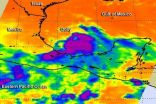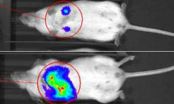(Press-News.org) The gap in stillbirth rates between indigenous and non-indigenous women in Queensland, Australia, is closing, however indigenous women are still at risk of stillbirth due to preventable causes, find researchers in a new study published today (3 September) in BJOG: An International Journal of Obstetrics and Gynaecology (BJOG).
The Australian study used data from the Queensland Perinatal Data Collection and looked at 881,211 singleton births from 1995 to 2011. It aimed to assess the differences in stillbirth rates over time among indigenous (Australian Aboriginal and Torres Strait Islander) and non-indigenous women based on their location and gestational age.
Of the total number of births, 49,450 (5.6%) were to indigenous women and 831,761 (94.4%) were to non-indigenous women. There were 5,425 stillbirths overall.
The paper found that over the study period, the stillbirth rate for all women in Queensland was 6.2 per 1000 pregnancies. They found that indigenous stillbirth rates decreased 31.9% from 13.3 to 9.1 per 1000 pregnancies while for non-indigenous women the rate was steady around 5.9 per 1000 pregnancies.
Overall, the difference in stillbirth rates between indigenous and non-indigenous women reduced by 57.3%. Moreover, indigenous women living in regional and remote areas experienced greater reductions than women in urban areas.
The researchers looked specifically at geographical location and found that stillbirth rates among indigenous women decreased by 10.2%, 29.2% and 49.9% for women living in urban, regional and remote areas respectively. In comparison, the stillbirth rates for non-indigenous women increased by 0.9% and 11.4% for women living in urban and regional areas and decreased by 39.2% for those in remote areas.
Looking at gestational age, the study found that among indigenous women stillbirth rates decreased the most, 69.1%, for births between 28 and 36 weeks gestation. Among non-indigenous women, there was an increase in stillbirth rates of 36.3% before 24 weeks gestation and decreases in the weeks following that. Overall, the difference in stillbirth rates reduced between indigenous and non-indigenous women for all gestational ages except for more than 37 weeks, where the difference increased by 18%.
At term (over 37 weeks) the researchers found that indigenous women had an increased risk of stillbirth due to maternal conditions and perinatal infection. For example, indigenous women had a six-fold increased risk of stillbirth due to diabetes, a three-fold increased risk of stillbirth due to spontaneous preterm birth and an increased risk of stillbirth due to hypertension, fetal growth restriction and antepartum haemorrhage.
Ibinabo Ibiebele, is the co-author of the study and a PhD student working with the Mater Research Institute and the School of Population Health at the University of Queensland, Brisbane, Australia. She said:
"This study shows that the gap in stillbirth rates is narrowing between indigenous and non-indigenous women except at term where we identified a number of preventable conditions such as diabetes, infection and fetal growth restriction.
"With the appropriate help and interventions there is an opportunity to further reduce the number of term stillbirths among indigenous women.
"It is vital that there is high quality antenatal care at all levels available for indigenous women which is culturally sensitive and incorporates diabetes management, smoking cessation, STI screening and folic acid supplementation to improve pregnancy outcomes."
John Thorp, BJOG deputy editor-in-chief said:
"This is a very interesting study as it looks at a large number of women over a long time period.
"Stillbirth is devastating for families and it is encouraging to see the gap in rates is closing between indigenous and non-indigenous women. This study furthers our knowledge as it looks at some of the trends and underlying causes of stillbirths."
INFORMATION: END
Stillbirth gap closing between indigenous and non-indigenous women, shows Australian study
2014-09-03
ELSE PRESS RELEASES FROM THIS DATE:
Estrogen increases cannabis sensitivity
2014-09-03
PULLMAN, Wash. - Smoking today's concentrated pot might be risky business for women, according to new research from Washington State University. The study is the first to demonstrate sex differences in the development of tolerance to THC.
Psychology professor Rebecca Craft showed that, thanks to their estrogen levels, female rats are at least 30 percent more sensitive than males to the pain-relieving qualities of THC—the key active ingredient in cannabis. Females also develop tolerance to THC more quickly. These sensitivities could increase vulnerability to negative ...
Discharged patients return to the ER because 'better safe than sorry'
2014-09-02
WASHINGTON – Patients who return to the emergency department within a few days of discharge do so principally because they are anxious about their symptoms and have lost trust in other parts of the health care system, according to the results of a study published online today in Annals of Emergency Medicine ("Return Visits to the Emergency Department: The Patient Perspective").
"When asked why they did not follow up as an outpatient, patients reported feeling that their symptoms were too severe to wait until their scheduled appointment or being instructed to return ...
NASA satellites calling here you come again, Tropical Storm Dolly
2014-09-02
Tropical Storm Dolly visited Mexico six years ago, and NASA satellite data is calling "Here you come again," reminiscent of the famous country singer's hit song, as another storm named Dolly heads for a second landfall in Mexico.
In July of 2008, Tropical Storm Dolly made landfall on Mexico's Yucatan Peninsula of Mexico before making a second and final landfall in south Texas. Now, six years later, Tropical Storm Dolly returns thanks to the six year list of revolving hurricane names, and once again Dolly is making landfall in eastern Mexico. NASA's Aqua satellite caught ...
Residency training predicts physicians' ability to practice conservatively
2014-09-02
LEBANON, NH – Doctors trained in locations with less intensive (and expensive) practice patterns appear to consistently be better at making clinical decisions that spare patients unnecessary and excessive medical care, according to a new study in JAMA Internal Medicine.
"Growing concern about the costs and harms of medical care has spurred interest in assessing physicians' ability to avoid the provision of unnecessary care," said lead author Brenda Sirovich of the VA Outcomes Group and The Dartmouth Institute for Health Policy & Clinical Practice.
Sirovich and colleagues ...
Experiences make you happier than possessions -- Before and after
2014-09-02
To get the most enjoyment out of our dollar, science tells us to focus our discretionary spending on experiences such as travel over material goods. A new Cornell University study shows that the enjoyment we derive from experiential purchases may begin even before we buy.
This research offers important information for individual consumers who are trying to "decide on the right mix of material and experiential consumption for maximizing well-being," said psychology researcher and study author Thomas Gilovich of Cornell University.
Previously, Gilovich and colleagues ...
Diabetes mellitus and mild cognitive impairment: Higher risk in middle age?
2014-09-02
Essen, Germany, September 2, 2014 – In a large population-based study of randomly selected participants in Germany, researchers found that mild cognitive impairment (MCI) occurred twice more often in individuals diagnosed with diabetes mellitus type 2. Interestingly, this strong association was only observed in middle-aged participants (50-65 years), whereas in older participants (66-80 years) the association vanished. This study is published in the Journal of Alzheimer's Disease.
The concept of MCI describes an intermediate state between normal cognitive aging and dementia. ...
This week From AGU: California earthquake, future Mars rovers, models underestimate ozone
2014-09-02
From AGU's blogs: Earthquake rupture through a U.S. suburb
Observations and mapping by seismologists at the University of California Davis in the hours and days after the August 24 earthquake in northern California are helping scientists understand why the earthquake caused so much damage in the region, according to a post in The Trembling Earth blog, hosted by the American Geophysical Union.
From this week's Eos: Future Mars Rovers: The Next Places to Direct Our Curiosity
Selecting where the next Mars rovers will land involves a series of open-invitation workshops ...
‘Prepped’ by tumor cells, lymphatic cells encourage breast cancer cells to spread
2014-09-02
Breast cancer cells can lay the groundwork for their own spread throughout the body by coaxing cells within lymphatic vessels to send out tumor-welcoming signals, according to a new report by Johns Hopkins scientists.
Writing in the Sept. 2 issue of Nature Communications, the researchers describe animal and cell-culture experiments that show increased levels of so-called signaling molecules released by breast cancer cells. These molecules cause lymphatic endothelial cells (LECs) in the lungs and lymph nodes to produce proteins called CCL5 and VEGF. CCL5 attracts tumor ...
Cool calculations for cold atoms
2014-09-02
Chemical reactions drive the mechanisms of life as well as a million other natural processes on earth. These reactions occur at a wide spectrum of temperatures, from those prevailing at the chilly polar icecaps to those at work churning near the earth's core. At nanokelvin temperatures, by contrast, nothing was supposed to happen. Chemistry was expected to freeze up. Experiments and theoretical work have now show that this is not true. Even at conditions close to absolute zero atoms can interact and manage to form chemical bonds.
Within this science of ultracold ...
Enzyme controlling metastasis of breast cancer identified
2014-09-02
Researchers at the University of California, San Diego School of Medicine have identified an enzyme that controls the spread of breast cancer. The findings, reported in the current issue of PNAS, offer hope for the leading cause of breast cancer mortality worldwide. An estimated 40,000 women in America will die of breast cancer in 2014, according to the American Cancer Society.
"The take-home message of the study is that we have found a way to target breast cancer metastasis through a pathway regulated by an enzyme," said lead author Xuefeng Wu, PhD, a postdoctoral researcher ...



